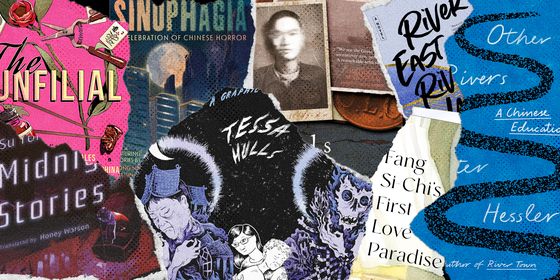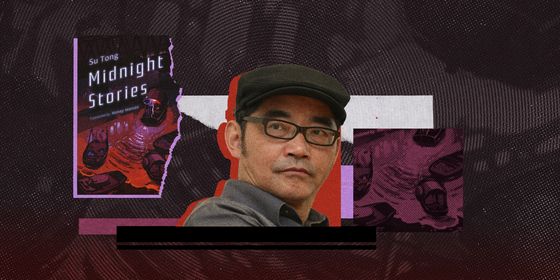Dark Forest, you don’t have a Wallbreaker
Only a few weeks after Dark Forest hit shelves in English, translated by Joel Martinsen, Liu Cixin became the first Chinese person to win the coveted Hugo Award for his Three-Body Problem, the first in the Three Body trilogy. With this second astounding work of phantasmagorical, space-age fiction, Liu Cixin has cemented a name for himself in the world of sci-fi as the Asian Asimov.
Fans of Liu Cixin should be forewarned that the following contains spoilers—even a slight sniff of the page could ruin one of Liu’s famous twists. Though, truth be told, Liu’s twists are less like twists than outright emotional abuse—a situation in which he creates a world, convinces you it is real and enduring, and then ceremoniously kicks it to death.
Whereas the first in the Three Body trilogy dealt with the politics of the poor wastrel that was humanity in the time of the Cultural Revolution and on to our current cusp of environmental annihilation, Dark Forest is altogether more succinct, more focused. Rather than the politics of a society on the brink (and an alien society constantly on the brink), Dark Forest concentrates on a world at war with an unbeatable foe and what that does to the psyche of society and the individual.
Dark Forest begins where the first left off, leaving many of the characters from the first in the dust (or, in fact, diced into tiny pieces), but fans of the first book will be happy to know that Da Shi makes a roaring comeback.
Besides the coming war, which is centuries away travelling at a fraction of the speed of light, the true focus of Dark Forest is in the existence of what are termed Wallfacers. The name, perhaps a little difficult to understand in English, is from the Chinese 面壁 (miàn bì), which has a duel meaning of a meditative state and a punishment—like being told to stand in the corner as a child but also to contemplate one’s existence. The Trisolarans, you see, communicate via a strange form of telepathy, having no idea how to translate a difference in the words “think” and “speak”. Given the power of the Trisolaran sophons to discover any and all Earth secrets, there is only one place left where planet Earth can hide its plans for war: inside a single human mind.
Planet Earth chooses the greatest minds of their generation to be Wallfacers, including a Venezuelan leader with a nuclear obsession and so hateful of the US that he goes to an analog of the late Osama bin Laden for advice and resources—Osama being an avid fan of Asimov in the book, of course.
Each Wallfacer lives a life of perpetual trickery, where they can use the combined resources of planet Earth for the wildest projects imaginable in order to completely dupe the attacking Trisolarans. As Liu states in the book, “The thoughts and behaviors these Wallfacers present to the outside world will be entirely false, a carefully crafted mélange of disguise, misdirection, and deception. The subject of this misdirection will be the entire world, both enemy and ally.”
And, while much of the book is the existential suffering of a life lived outside humanity, fans of hard sci-fi need not worry; the technological advances in this book dwarf the speculative science of the last (though more in scope than in substance). The novel takes us from the comparatively mundane science of carbon fiber to non-medium fusion engines, space colonies throughout the solar system, and deep space travel.
Indeed, the first in the Three Body trilogy only set up the motive; this is the war. Fans of the first book will remember that the chronology of Earth in Three-Body Problem only reached back to the Cultural Revolution and into the near future (2015, as it happens, though no hyper-dimensional protons have yet to threaten me into submission). This novel spans hundreds of years, but thanks to the speculative science of cryogenics, the characters get to sleep and then wake up to a world entirely changed.
Our main character this time is not a low-level physicist in a dead-end research project. It’s Luo Ji, who, and I’m warning one last time about spoilers, is an unlikely Wallfacer. He has the might of planet Earth behind him and, well, uses it to get drunk and live a life of solitary hedonism. Da Shi, a Chinese foil for a clever film noir detective, is as ever the truly wise one of the pair.
Dark Forest, much like the first novel, hosts a bevy of brilliant military and scientific minds, but the most frightening aspect of Dark Forest is the impending Trisolaran fleet; the most striking aspect of the Trisolarans is that they simply don’t give a damn about the might of Earth. Wallfacers come up with plan after brilliant plan using nukes, cruelty, bribery, and even planetary suicide, but the message from the Trisolarans is always the same: go ahead punk, make my day.
“Three Body is Back” is a story from our newest issue, “Mental Health”. To read the whole piece, become a subscriber and receive the full magazine. Alternatively, you can purchase the digital version from the iTunes Store.












